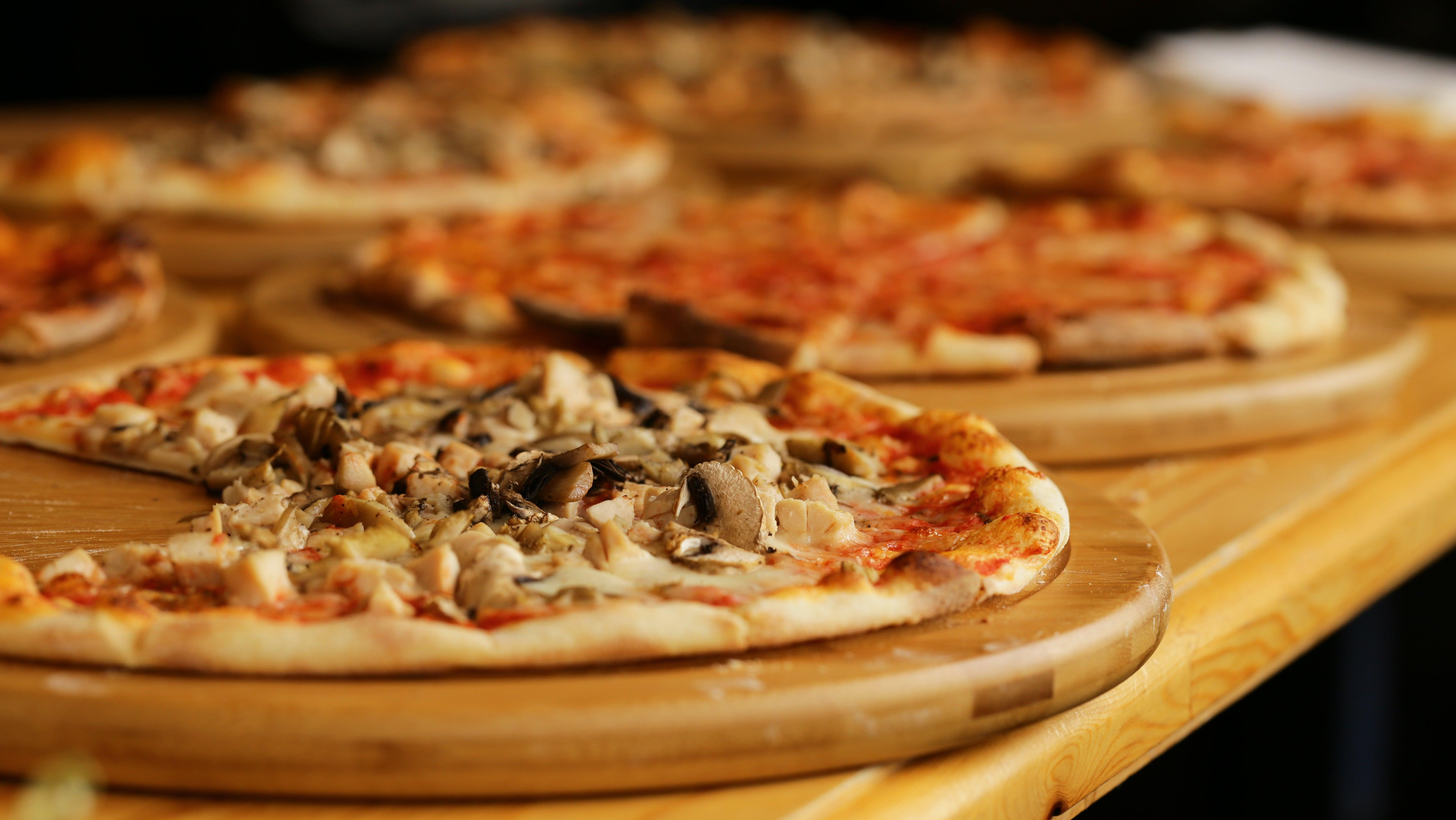Why All-You-Can-Eat Pizza Isn't The Deal You Think It Is
A look into the cost breakdown of bottomless pizza highlights its flaws.
The seemingly ubiquitous Gordon Ramsay recently announced the opening of an all-you-can-eat slice joint in Washington DC, opening this winter. The restaurant, Street Pizza, already has four locations in London, all of which also feature all-you-can-eat pizza. Though the idea of endless slices sounds good on paper, is it worth it for a customer to pay for this option? And is it a viable business model for the restaurant itself?
How the pizza math breaks down
Washingtonian spoke to Ramsay about how many slices people typically crush in one session.
"We never count the slices in London," Ramsay said. "Most of the time guests are having a great time with friends and family and honestly forget how many they've consumed. But sometimes after a really long run or bike I can do four." Ramsay's restaurant charges £16, or roughly $20, for a bottomless slice session.
After checking out the Instagram feed for Ramsay's pizza brand, the Neapolitan-esque slices seem to be decently sized. I can typically crush a whole 12-13" handmade pie by myself (I used to do it all the time at my previous job as a pizza maker), but I end up hitting a wall pretty quick thereafter. All those carbs, cheese, and various toppings sit heavy in my stomach and make me feel like I swallowed a rock. Could I go beyond that amount of pizza comfortably? Probably not.
Whole 12" Neapolitan pies cost anywhere from $15-$20 in Chicago, give or take a few bucks. So you'd have to go beyond a whole pizza to start getting some extra mileage for your money during a nonstop pizza-eating marathon.
But suppose you're a champion and can easily kill two pies in one sitting. Is the restaurant technically losing money? I called my former boss Derrick Tung, owner of Paulie Gee's Logan Square, to find out what he thought about the all-you-can-eat pizza model.
"Pizzerias' cost of goods, from the food perspective, is around 20-25%," Tung said, meaning that whatever price is listed on the menu, the pizza costs about 20-25% of that figure to prepare. "It depends on the pizzeria. There are some that are doing it for less, and there's some that are doing it with really nice ingredients [and] are doing it for way more, almost 40%. But your typical pizza's food cost is going to be from 20-25%."
So, if someone were to eat two whole pizzas in one sitting, for the all-you-can-eat price of $20, would the pizzeria make enough money from that transaction?
"If you eat two pizzas, we're still making money," he said. "I think you'll always have some heavy hitters come in and [the pizzeria will] not make a ton of money on it, but realistically, if [Ramsay] is charging $20, it's going to take about 3.5 to 4 pizzas' worth."
How all-you-can-eat pizza affects business
So, it's pretty safe to say that the vast majority of diners who pay the bottomless pizza fee won't literally eat their way through the profits. Still, with restaurants' notoriously thin profit margins, losing out on even a few bucks thanks to zealous all-you-can-eat customers could have other consequences.
"Now your issue becomes your cost of staffing," Tung explained. "Are you making enough money for the other stuff? Maybe [Ramsay] is, maybe he's not. Maybe he's just overpricing his Coke. My guess is that they make okay money on the food, and where they make the real money is the stuff like the dessert and the drinks." That certainly tracks with what we know about alcohol markups at restaurants.
A large-scale operation like a chain of Gordon Ramsay restaurants has more wiggle room to offer the potentially unprofitable promotion of bottomless pizza. But Tung also noticed something about the Street Pizza menu that I didn't: Only five types of pizza at the restaurant are offered as bottomless options. Ramsay's London locations feature the following pizzas as all-you-can-eat: margherita, pepperoni, eggplant, corn and chorizo, and a rotating special.
"It's pretty tight food control," Tung said. "The most expensive thing is going to be the pepperoni—maybe the mozzarella, but realistically the pepperoni. With [Ramsay's] name and buying power, he's probably getting better ingredient pricing, which means he can probably bring his down to as low as 10-15%." So as long as Gordon Ramsay's name continues to hold sway in the industry, his restaurants are well situated to offer cheap pizzas at a higher volume.
How restaurants really make their money
When it comes to drinks, alcoholic beverages at Street Pizza in London cost £6.50-£10.50 (roughly $8-$13) depending on what you pick. The ideal profit margin on bar inventory is around 80%. It sounds like a lot, but it makes sense when you consider that quite a bit of that will end up going to operating costs like rent, staff, and utilities. And alcohol sales can do a lot to make up for the dent made by a diner's big appetite during an all-you-can-eat pizza session.
So, the restaurants that offer this deal will probably make out okay. But is an endless pizza promotion worth it for you, the diner? Maybe, if you're the type of diner who's only in it for the pizza and isn't inclined to order apps, sides, or drinks. The upfront all-you-can-eat fee means you're paying for the opportunity to plow down as much food as possible, but actually eating your money's worth is, by the promotion's own design, a feat many of us are unlikely to accomplish. I'm sure some of you out there like a good challenge, but know your limits before you drop the fee.
